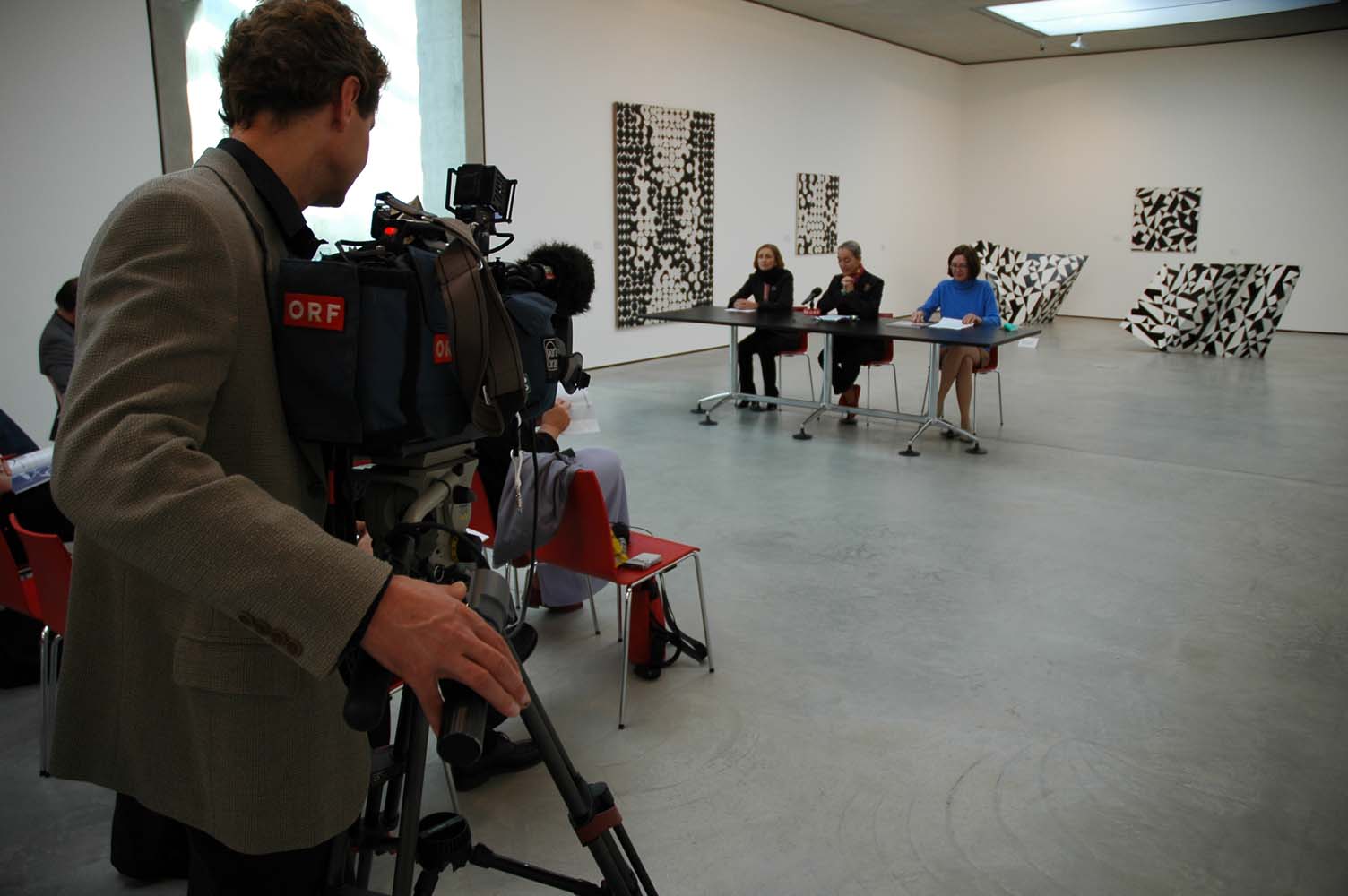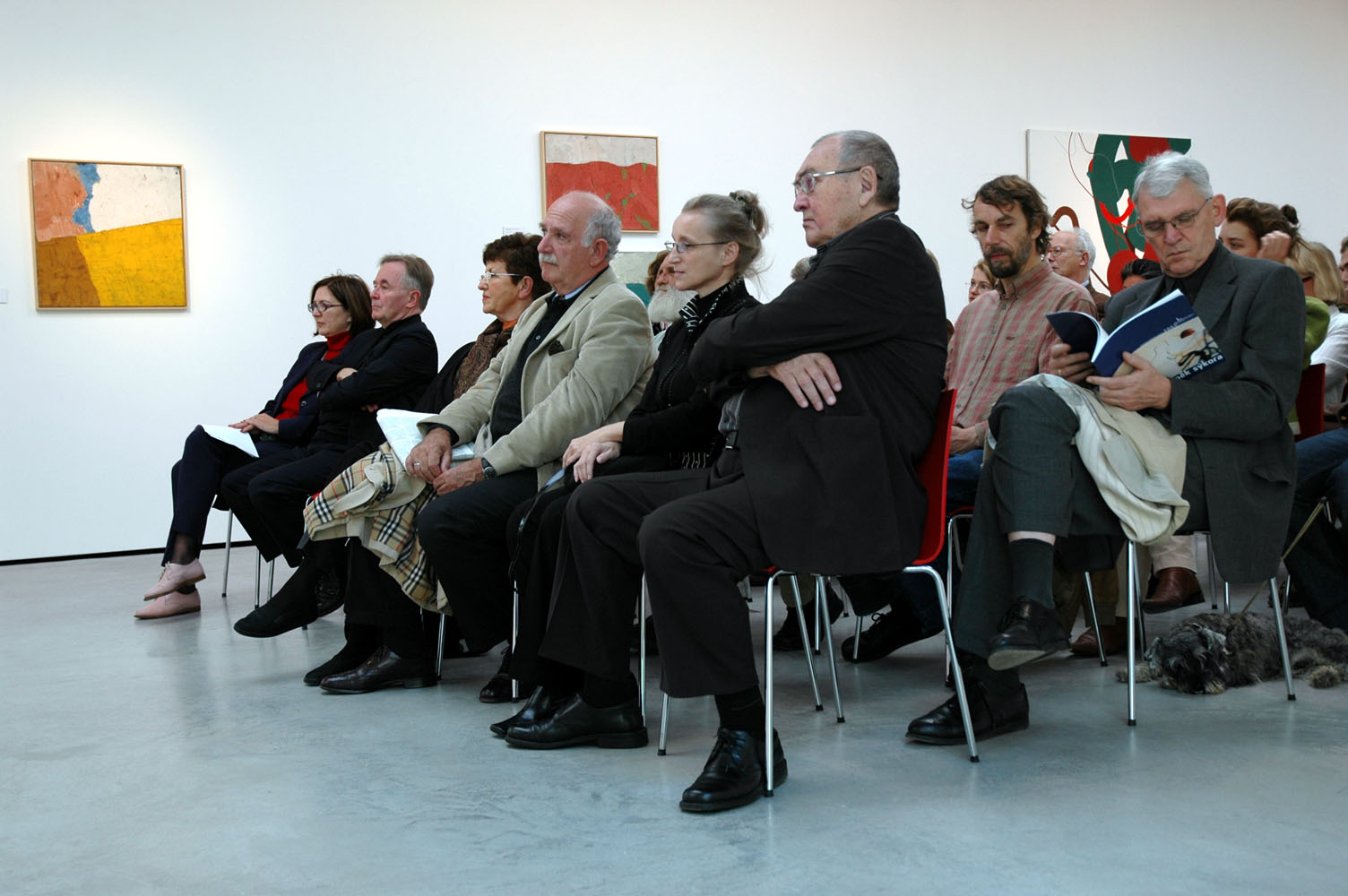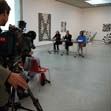texts about zs
Chinese philosopher Laozi referred to the world as a valley of mystery. As if confirming this thought, in his work Zdeněk Sýkora mysteriously connects the valleys of two worlds that are usually on opposite sides, contrary to each other – but once they connect, they become multiples, with combinations creating something new and never seen before.
Zdeněk Sýkora is able to manouvre with boldness and practicality in the world of conceptual exactitude, the natural sciences, laws of physics, geometric systems, mathematical combinations, computers and technology – in the absolutely rational world – and thus he knows how to tame and atomise his structure through logic, patience and order.
Yet with equal finesse he enters the world of contrasts and opposites, the world of imagination and illusion, natural matter, maturation and withering, the world of painting techniques and colours, sensuousness, emotions and harmony, and thus he has an intimate awareness of passion, grief and desire.
The two worlds connected through the “method of controlled randomness”, Zdeněk Sýkora becomes their messenger; despire their mutual disharmony, he has no problem turning them into a monolithic substance that he brings to his paintings and prints. This combination in the painter’s artistic sensors and both hemispheres of his brain come together in exceptional harmony, creating an inimitable, original oeuvre.
In inner harmony with himself, the painter peers deeply into the chaos of his own spirit, where he senses and becomes acquainted with the eternal – because great art does become an eternal witness of the times. In this case, the message is imbued with an intoxicating joy, lightness and obsession with art that eases the journey down this valley of tears. “Spiritual combat is as brutal as the battle of men,” wrote Arthur Rimbaud before he burned copies of the book he wrote. In contrast, one can witness that art is strengthening, liberating and makes life more tolerable.
I believe that like Theseus, who set out to the mythical Labyrinth to kill the Minotaur, Zdeněk Sýkora set out to the labyrinth of new painting. He tamed the passion of traditional approaches to painting and hid his egocentric self behind thousands of tangents, circles and intersections that allow him to recast the chaos of the postmodern period into order, and let him use a pre-set, yet random structure to observe and copy spontaneous developments outdoors and inside.

This ability – amplified by a remarkable level of openness and directly proportional to the courage to express this experience in art – has become a unique diagnosis of the painter’s spirit, which Zdeněk Sýkora presented to the painters’ arena over half a century ago, perservering in sprite of the times, regardless of whether he was in the limelight or was forced to stoically remain “forgotten” due to the madness of the times. Despite this, painting is his calling and necessity in life; he still stretches his enormous canvases, is still buried in work. “I Am Absolute Will,” declared Ladislav Klíma.
His authentic, timeless ouevre distinctively and consistently bristles with angles and corners, falls silent with pauses and is rounded out with semi-circles; it is corroded by spots or full-colour, interweaving hieroglyphs that may remind those in the know of the rounded peaks of the Central Bohemian Uplands, the twisting and turning Ohře (Eger) River, or perhaps the gallaxy’s veins and capillaries. It does not matter whether the colours, similar to light waves, glow or oscillate between several shades of black; surfaces may be connected through paint into a single, harmonious unit or remain unpainted by the space, with just a few tiny lines endowing the airy emptiness with a sense of sharpness. In all this one can sense the mystery of an archetypical, natural cycle that the artist conveys using randomly chosen numbers, through lines, curves, sine waves, verticals and rays. Through a ruptured dam of fantasy, he tenaciously builds an inner garden in which the paths, guided by some sort of higher order – because at this moment we are not subject to the law, but subject to mercy – branch out against time, space and emptiness.
The pictures are not framed, so they are not hemmed in, instead becoming a part of the universe; they may continue along their tangents into infinity, vanishing into it, becoming everything and nothing at the same time – perhaps absolute freedom (and the painter undoubtedly senses that, as touching this freedom is not unlike nirvana). There is nothing more in them than maya, sudden meditative presence. No message, no hidden signals: they simply are, they exist in the here and now.
“I’m more interested in artists than art,” Andy Warhol declared, and in this regard I must mention the human side of Zdeněk Sýkora. His dedication to the “matter at hand” and especially the freedom (or bravery?) with which he constantly experimented landed him on thin ice in the art world – but all pioneers must transcend normal conventions, traditions, superstitions, and their own, self-imposed limitations. Or is it perhaps a sense of faith, inspired from elsewhere, yet absolutely private? An intimate certainty that we’ve taken the right path, full of inner humility, yet still out of defiance because even though we transcend, even though we set ourselves apart, we sense it is not our own conscious, rational decision? That there is no way we could do otherwise? How is it that we can turn simple “desire” into action? But the roots also must be put down as without them, faith in anything is fragile. There is no question that Zdeněk and Lenka Sýkora’s roots are exceptionally strong, exceptionally flourishing and exceptionally synchronised. They provide stability and hold the frenzied crown of restless knowledge, the tangle of round outlines of rivers and contours of nature. And talent, of course, without which everything would merely be a speculative, sanctimonious sham, a deceiptful, petty game at something that grows old and stale before it is even born.
In terms of the senses, music is unquestionably the most mysterious art as it is closest to the inexpressible; how you “grasp” its intangibility is entirely up to you. For me, Zdeněk Sýkora’s paintings are a concert in fine arts, melodies on the canvas, a colourful oratorium of thermonuclear reactions, a visionary sonata of cosmic paths, an incommunicable, inexplicable and, despite all its abstract mystery, symphonic poem gushing with the openness and vitality of painting.
“I am standing in an open field, all directions are open, the light and wind is coming in from all sides,” Zdeněk Sýkora said about himself, in the end being an onlooker even in places where he himself is a player. This is exacrtly the skill that allows him to be one of the greatest players on the international fine art chessboard.



